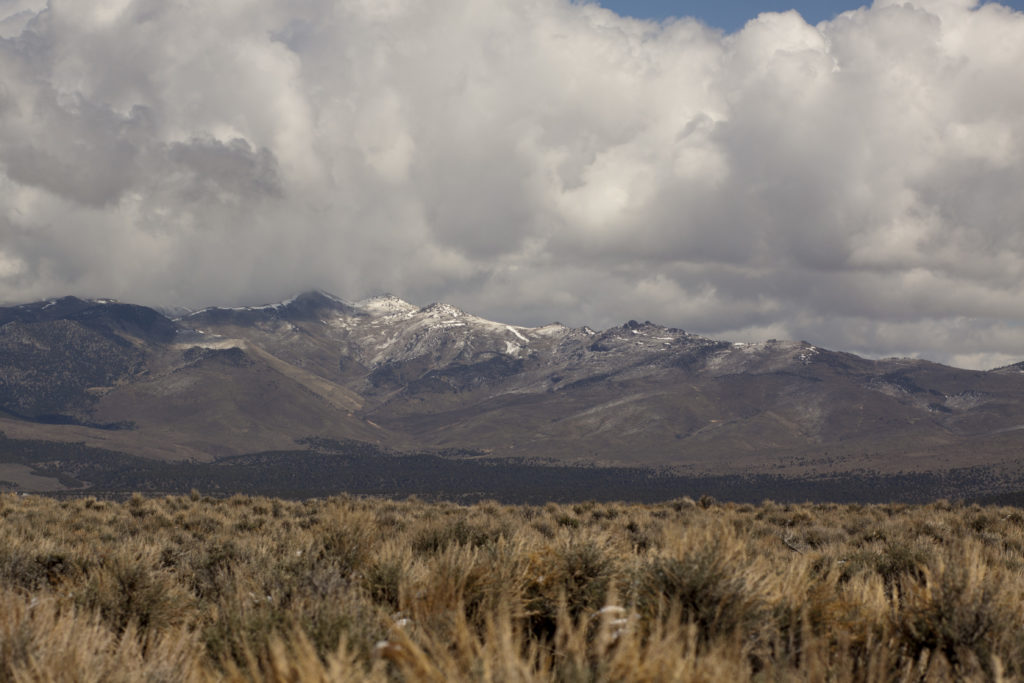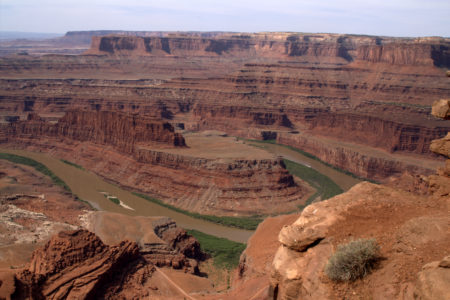Our Public Lands and Waters
Public lands are composed of local, state, and federal protected areas. Some public lands are designated as parks, forests, preserves, marine reserves and sanctuaries, refuges, and national monumnets; others as wild rivers, historical and heritage areas, or critical habitat. The following paragraphs excerpted from several sources provide a broad overview of our public land trust.
Brief Description of Federal Public Lands
 The federal government owns roughly 640 million acres, about 28% of the 2.27 billion acres of land in the United States. Four agencies administer 608.9 million acres of this land: the Bureau of Land Management (BLM), Fish and Wildlife Service (FWS), and National Park Service (NPS) in the Department of the Interior (DOI), and the Forest Service (FS) in the Department of Agriculture. Most of these lands are in the West and Alaska. In addition, the Department of Defense administers 14.4 million acres in the United States consisting of military bases, training ranges, and more. Numerous other agencies administer the remaining federal acreage.
The federal government owns roughly 640 million acres, about 28% of the 2.27 billion acres of land in the United States. Four agencies administer 608.9 million acres of this land: the Bureau of Land Management (BLM), Fish and Wildlife Service (FWS), and National Park Service (NPS) in the Department of the Interior (DOI), and the Forest Service (FS) in the Department of Agriculture. Most of these lands are in the West and Alaska. In addition, the Department of Defense administers 14.4 million acres in the United States consisting of military bases, training ranges, and more. Numerous other agencies administer the remaining federal acreage.
The lands administered by the four land agencies are managed for many purposes, primarily related to preservation, recreation, and development of natural resources. Yet each of these agencies has distinct responsibilities. The BLM manages 247.3 million acres of public land and administers about 700 million acres of federal subsurface mineral estate throughout the nation. The BLM has a multiple-use, sustained-yield mandate that supports a variety of uses and programs, including energy development, recreation, grazing, wild horses and burros, and conservation. The FS manages 192.9 million acres also for multiple uses and sustained yields of various products and services, including timber harvesting, recreation, grazing, watershed protection, and fish and wildlife habitats. Most of the FS lands are designated national forests. Wildfire protection is increasingly important for both agencies.

The FWS manages 89.1 million acres of the total, primarily to conserve and protect animals and plants. The National Wildlife Refuge System includes wildlife refuges, waterfowl production areas, and wildlife coordination units. The NPS manages 79.6 million acres in 401 diverse units to conserve lands and resources and make them available for public use. Activities that harvest or remove resources generally are prohibited.
Federal land ownership is concentrated in the West. Specifically, 61.2% of Alaska is federally owned, as is 46.9% of the 11 coterminous western states. By contrast, the federal government owns 4.0% of lands in the other states. This western concentration has contributed to a higher degree of controversy over land ownership and use in that part of the country.
Throughout America’s history, federal land laws have reflected two visions: keeping some lands in federal ownership while disposing of others. From the earliest days, there has been conflict between these two visions. During the 19th century, many laws encouraged settlement of the West through federal land disposal. Mostly in the 20th century, emphasis shifted to retention of federal lands. Congress has provided varying land acquisition and disposal authorities to the agencies, ranging from restricted to broad. As a result of acquisitions and disposals, federal land ownership by the five agencies has declined by 23.5 million acres since 1990, from 646.9 million acres to 623.3 million acres. Much of the decline is attributable to BLM land disposals in Alaska and also reductions in DOD land.
(Source: Congressional Research Service, Federal Land Ownership: Overview and Data, December 2014.)
State and Local Parks

Local and state parks provide economic activity, conservation, recreation, and add to our quality of life. As of 2014, there were 10,234 state park units in the United States, according to the National Association of State Park Directors (NASPD). California alone has 278 including spectacular redwood and coastal parks. There are some 739 million annual visits to the country’s state parks. The NASPD further counts over 43,000 miles (69,000 km) of trail, 217,367 campsites, and 8,277 cabins and lodges across U.S. state parks. Many states include designations beyond “state park” in their state parks systems. Other designations might be state recreation areas, state beaches, marine protected areas, and state nature reserves Some state park systems include long-distance trails and historic features and sites. (Source: Wilkipedia, 2017))
Local and regional public park agencies generated nearly $140 billion in economic activity and supported almost 1 million jobs from their operations and capital spending alone in 2013, (Source: The Economic Impact of Local Parks An Examination of the Economic Impacts of Operations and Capital Spending on the United States Economy, National Park and Recreation Association, 2015)
Marine Sanctuaries and Marine National Monuments
The Office of National Marine Sanctuaries of National Oceanic and Atmospheric Administration serves as the public federal entity for a network of underwater parks and reserve es encompassing more than 600,000 square miles of marine and Great Lakes waters from the state of Washington to the Florida Keys, and from Lake Huron to American Samoa. The network includes a system of 13 national marine sanctuaries and Papahānaumokuākea and Rose Atoll Marine National Monuments (http://sanctuaries.noaa.gov/).